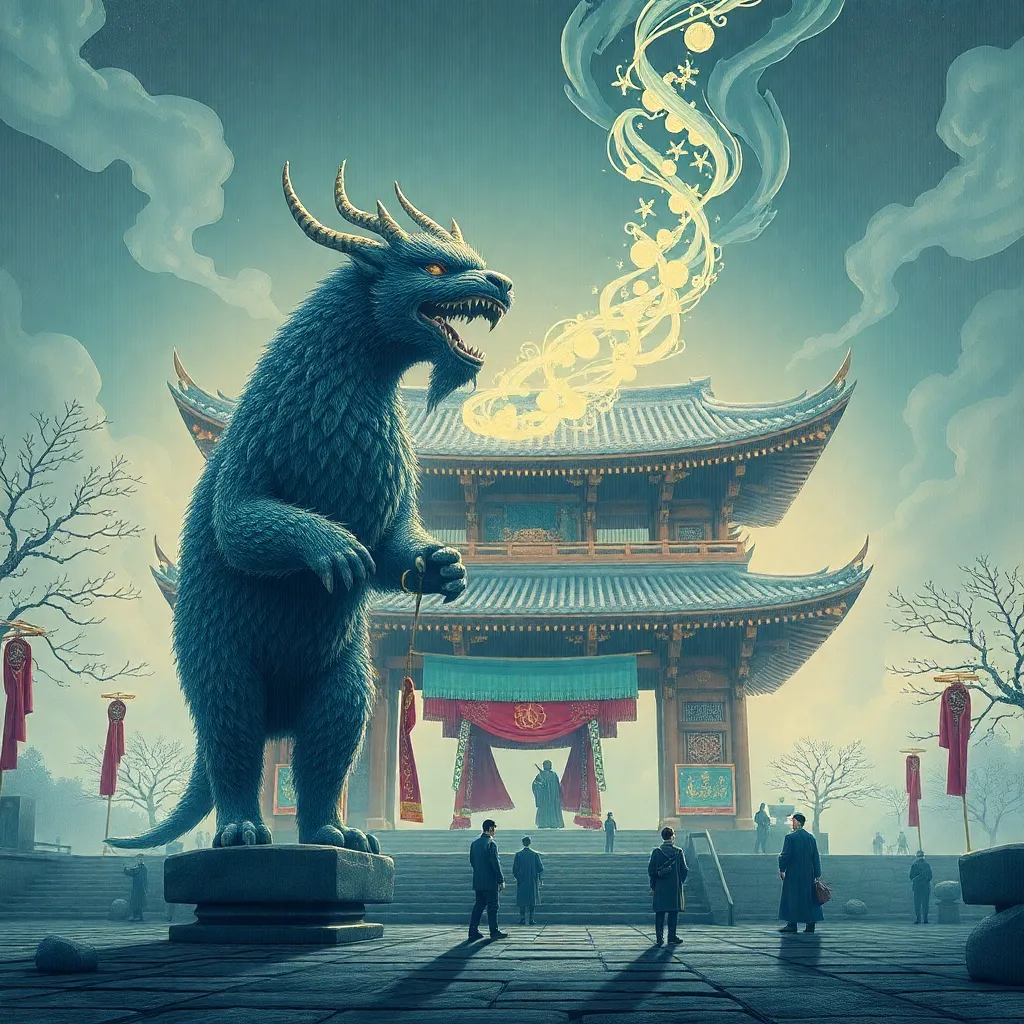The Baku in Japanese Religion: Exploring the Myth’s Connections to Buddhist and Shinto Beliefs
I. Introduction
The Baku, a mythical creature in Japanese culture, is often depicted as a chimera-like being with the body of a bear, the trunk of an elephant, and the face of a tiger. Traditionally, it is believed that the Baku has the power to consume nightmares and evil spirits, providing protection and peace during sleep.
This article aims to explore the origins, significance, and cultural representations of the Baku within the context of Japanese religion, particularly its connections to Buddhist and Shinto beliefs. Understanding the Baku’s role in these spiritual traditions reveals insights into the broader fabric of Japanese mythology and its continuous evolution over time.
Buddhism and Shintoism, the two predominant religions in Japan, offer distinct yet interconnected perspectives on the Baku. Buddhism, with its focus on spiritual awakening and protection from suffering, complements Shintoism’s reverence for kami (gods and spirits) and the natural world. Together, they shape the multifaceted narrative of the Baku in Japanese culture.
II. The Origins of the Baku Myth
The legend of the Baku has deep historical roots in Japan, tracing back to ancient times. Its earliest mentions can be found in texts like the “Nihon Shoki” (Chronicles of Japan) and “Konjaku Monogatari” (Tales of Times Now Past), where it is described as a dream-eating spirit.
Influence from Chinese mythology played a significant role in the development of the Baku concept. The Chinese term “baku” refers to a similar creature known for its ability to eat dreams. This connection illustrates the cross-cultural exchanges that have enriched Japanese folklore.
Over time, the Baku legend has evolved, adapting to the changing cultural and spiritual landscape of Japan. From a fearsome dream predator to a benevolent guardian, the Baku’s image reflects the shifting beliefs and values of Japanese society.
III. The Baku in Buddhist Tradition
In Buddhist tradition, the Baku is often seen as a protector against nightmares and evil spirits. It is believed that invoking the Baku can help individuals avoid disturbances during sleep and promote peaceful dreams.
Symbolically, the Baku represents the duality of protection and fear. In Buddhist texts, it is portrayed as a creature that consumes negative energies, allowing individuals to experience spiritual calmness. This aligns with the Buddhist emphasis on overcoming suffering and achieving enlightenment.
Rituals and practices related to the Baku in Buddhism often involve the creation of talismans or amulets featuring the creature, intended to ward off bad dreams. Additionally, specific chants and prayers may be recited to invite the Baku’s presence and protection during sleep.
IV. The Baku in Shinto Beliefs
In Shinto mythology, the Baku holds a unique place among the pantheon of kami. It is often regarded as a spirit that embodies the protective qualities associated with dreams and the subconscious.
The connection between Baku and kami is significant, as Baku is seen as a guardian spirit, reflecting Shinto’s reverence for nature and the spiritual essence within all living things. This relationship emphasizes the belief that the Baku is not merely a mythological creature but a manifestation of divine protection.
Shinto practices related to the Baku include the establishment of shrines dedicated to the creature, where individuals can pray for protection from nightmares and evil influences. Rituals such as offering rice or other food items to the Baku are common, symbolizing gratitude and seeking blessings.
V. Comparative Analysis of Buddhist and Shinto Perspectives on Baku
When comparing the portrayals of Baku in Buddhist and Shinto traditions, several similarities and differences emerge:
- Similarities: Both religions view the Baku as a protector against nightmares and evil spirits, emphasizing its role in providing comfort during sleep.
- Differences: In Buddhism, the Baku’s role is often tied to spiritual awakening and overcoming suffering, while in Shintoism, it is more about the connection to natural spirits and reverence for the kami.
- Syncretism: The interplay between Buddhism and Shinto has led to a rich tapestry of Baku representations, where elements from both traditions enhance its significance in Japanese culture.
VI. Contemporary Cultural Representations of Baku
The Baku continues to hold a prominent place in modern Japanese art and literature. Artists frequently depict the creature in various forms, capturing its mythical essence while also reimagining its characteristics to resonate with contemporary themes.
In popular culture, particularly in anime and manga, the Baku has become a symbol of dreams and the subconscious. Characters inspired by the Baku often embody traits of protection and wisdom, showcasing its enduring relevance in storytelling.
The Baku’s role in contemporary spirituality and folklore reflects a resurgence of interest in traditional beliefs. Many people today still invoke the Baku for protection against nightmares, blending ancient practices with modern lifestyles.
VII. The Psychological and Symbolic Significance of the Baku
The Baku serves as a powerful symbol of protection and comfort, particularly in the context of dreams and nightmares. It embodies the human desire for safety during vulnerable moments of sleep.
Psychologically, nightmares are often manifestations of anxiety, fear, or unresolved conflicts. The Baku’s role as a dream-eater can be interpreted as a coping mechanism, allowing individuals to confront and overcome their fears through the symbolic act of consuming nightmares.
As contemporary anxieties increase, the relevance of the Baku remains significant. It represents a means of addressing fears and seeking solace, resonating with those who feel overwhelmed by the challenges of modern life.
VIII. Conclusion
This exploration of the Baku in Japanese religion highlights its rich historical and cultural significance across Buddhist and Shinto traditions. From its origins to contemporary representations, the Baku symbolizes protection, comfort, and the interplay between the spiritual and the psychological.
As a mythological creature, the Baku illustrates the enduring legacy of Japanese beliefs, reflecting the complexities of human experience and the quest for peace amidst chaos. The intersection of myth, spirituality, and culture ensures that the Baku will continue to inspire and resonate with future generations.



